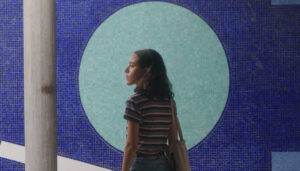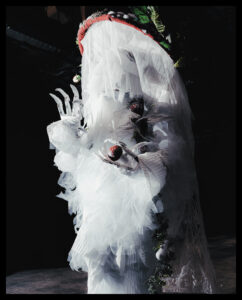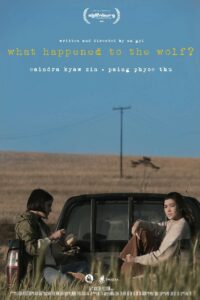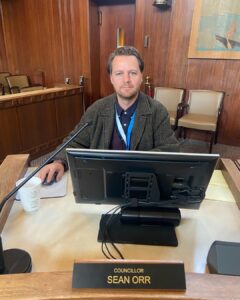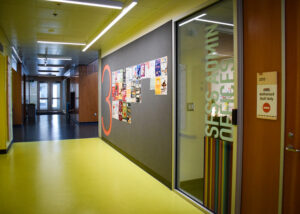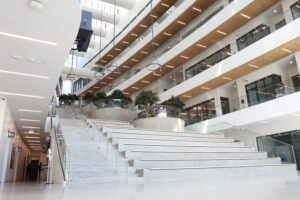A joint project between the Museum of Vancouver, the Musqueam First Nation, and the Museum of Anthropology, c̓əsnaʔəm, the city before the city is an exciting and important series of exhibits. An exploration of the historical and living culture of the Musqueam peoples, this three-site project is a groundbreaking exercise in cooperation between the academic and First Nations communities.
The continuity and uniqueness that each of the sites brings to the overall project is astounding. Each site by itself plays an important role in the community, showing the belongings, the voices, and the experiences of the Musqueam peoples.
The portion of the exhibition at the Museum of Vancouver (MOV) primarily shows the ancient artifacts of the Musqueam First Nation. In an attempt to dismantle the cultural barrier, the belongings have been organized by the Musqueam, with each artifact identified by its use along with its name in the Musqueam language, hən’q’əmin’əm’. At each display, an interactive screen with the faces and voices of living Musqueam peoples discuss the belongings in the case and highlights the importance of oral history in their culture.
The use of multimedia in the MOV exhibit adds to the exhibit’s visual and cultural appeal, with an animation projected on the back wall depicting the Musqueam founding story. This modern-day portrayal of the ancient story is only one example of the seamless joining of the present and the past in the exhibit, showing that, as asserted by Councillor Morgan Guerin, spokesperson for the Musqueam First Nation, the “Musqueam are not gone; we never went away.”
The MOV display also depicts the region’s history of colonialism, and the part the museum itself played in this history. A series of maps, a detailed timeline, and community photographs show the effect of colonialism on the Musqueam First Nation.
Before this exhibit, the museum had a history of claiming First Nations artifacts, and displaying them without the permission of these groups — in some cases, misrepresenting them. Susan Roy, co-curator of the MOV exhibit, says the museum is now attempting to “bring back objects that are in different museums around North America and the world.”
At the Musqueam Cultural Centre Gallery, the display focuses on the comparison between ancient and modern knowledge, and the continuation of the culture into contemporary times. Councillor Guerin led the tour, saying “there is a connection between past and present, a working knowledge of how it was.”
This connection can be seen in the displays, shaped like Coast Salish looms, with ancient belongings in the top of the case and their contemporary equivalents at the bottom. The collection is completed with the traditional stories of the people engraved in the windows overlooking the river delta, giving a narrative to the land and highlighting its connection to the Musqueam peoples.
The final portion of the exhibit is at the Museum of Anthropology (MOA) at UBC, with a focus on the voices of the people and the sharing of cultural knowledge. This experimental exhibit has no belongings, only the oral tradition of the Musqueam written on the walls, and interactive multimedia centres to encourage learning. The entrance of the exhibit is styled like a contemporary longhouse, inviting all who enter to learn about the connection between past and present, and “what it means to be Musqueam,” according to Jordan Wilson, co-curator of the exhibit.
This series of exhibits is a breathtaking example of cooperation between museums, and a triumphant return of autonomy for the Musqueam First Nation. A learning experience like no other, these exhibits display the historical and ongoing struggles and successes of the Musqueam peoples. As Guerin says, “we are very much a sharing people. Welcome, with arms open wide.”
c̓əsnaʔəm, the city before the city is on display until January 28, 2016. For more information, visit thecitybeforethecity.com.



